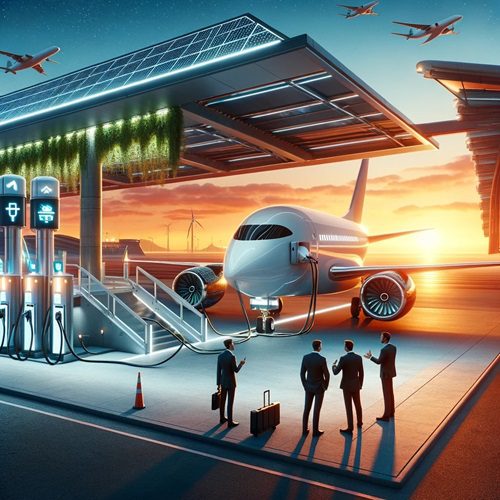 In an era where innovation intersects with a steadfast commitment to sustainability, the aviation sector stands on the cusp of a remarkable transformation. Electric planes, once a figment of science fiction, are now soaring into reality, promising to redefine the paradigms of air travel. This groundbreaking shift heralds a new chapter in aviation and encapsulates a broader narrative of economic revitalization, environmental stewardship, and technological advancement.
In an era where innovation intersects with a steadfast commitment to sustainability, the aviation sector stands on the cusp of a remarkable transformation. Electric planes, once a figment of science fiction, are now soaring into reality, promising to redefine the paradigms of air travel. This groundbreaking shift heralds a new chapter in aviation and encapsulates a broader narrative of economic revitalization, environmental stewardship, and technological advancement.
The Dawn of a New Era in Aviation
At the heart of this transformation is the emergence of electric aircraft, vehicles poised to dramatically reduce operating costs and emissions while expanding the horizons of regional air travel. According to a comprehensive study commissioned by Jettly, the advent of electric aviation is anticipated to slash fuel expenses by a staggering 90% and maintenance costs by half, signifying a seismic shift in the economics of air travel. This paradigm shift is not merely a forecast but a burgeoning reality, with projections indicating the replacement and potential multiplication of the existing fleet of nine-passenger aircraft to cater to the burgeoning demand for cost-effective and environmentally friendly travel options.
Economic Revitalization through Regional Expansion
The electric aviation revolution is set to catalyze the growth of regional markets, with current battery technologies making flights under 500 km viable and economically attractive. This technological leap forward is expected to bring an additional 5,000–8,000 public and private airports into service, significantly enhancing accessibility and reducing the carbon footprint associated with travel to major airport hubs. Such expansion promises to breathe new life into regional airports, many of which have languished underutilized, overshadowed by the dominion of significant air travel centres.
A Beacon for Environmental Sustainability
Electric planes emerge as beacons of hope in the face of escalating climate change concerns. When powered by renewable energy sources, zero emissions at the point of use and a minimal carbon footprint position electric aviation as a critical ally in the global fight against greenhouse gas emissions. The promise of quieter skies complements this environmental boon, as electric motors significantly reduce noise pollution, a longstanding adversary of airport expansion and community acceptance.
Overcoming Challenges with Collaborative Innovation
However, the journey towards a fully electrified aviation sector is fraught with challenges. The adaptation of airport infrastructure, the development of advanced charging technologies, and the need for ongoing research and innovation underscore the complexity of this transition. It is a path that demands the collaborative efforts of manufacturers, airport operators, governments, and communities. Yet, the vision articulated by industry leaders like Jettly’s CEO, Justin Crabbe, underscores a collective resolve to navigate these challenges, driven by the promise of a more sustainable, efficient, and accessible air travel future.
The Horizon of Hope
As we peer into the future, the contours of a new era in aviation begin to crystallize. By 2050, the industry anticipates the standardization of electric aircraft, marking a significant milestone in our collective journey towards a greener planet. This vision of busier, greener, and quieter skies is a testament to human ingenuity and a clarion call for sustainable progress. The electric aircraft revolution, therefore, is more than a technological breakthrough; it is a narrative of hope, a blueprint for a sustainable future, and a testament to the indomitable spirit of innovation that propels humanity forward.
In conclusion, as the world stands on the brink of this aeronautical revolution, the promise of electric planes transcends the confines of aviation, offering glimpses of a future where technology and sustainability converge to redefine the essence of travel. It is a future replete with challenges yet brimming with possibilities. In this future, the skies are not just a passage but a testament to our collective resolve to forge a sustainable path forward.
Written by: Christine Nguyen
















